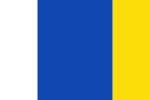Free Canaries
Canarias Libre was a left-wing Canarian nationalist movement created in the Canary Islands (Spain) around the year 1959 and included the anticlerical group called Cuban Church and well-known communists such as Fernando Sagaseta, Carlos Suárez, Armando León or Andrés Alvarado, all of them later members of the PCE; Sectors already linked to the Communist Party of Spain will also take part in its formation, including Agustín Millares Sall.
There are a series of events that influenced the emergence of this group:
- The crisis of the agricultural model with the emergence of an economic model that will revolve around tourism and the exodus of the countryside towards work in construction or in hospitality and services. The appearance of slums and chabolism.
- The persistence of the phenomenon of "caciquism".
- Lack of liberties during the Francoist dictatorship.
- The execution of Juan García Suárez "El Corredera" in 1959.
- The Cuban Revolution.
- The emergence of ETA in the Basque Country.
- The initiation of decolonization processes on the African continent.
Although the political orientation of Canarias Libre is not fully defined[citation required], and within it there were various tendencies, it was an independence movement of a socialist nature. Within Canarias Libre there is also a clear differentiation between the stevedores of the Isleta, and the sector that would later be integrated into the PCE. At a certain point, the merger of the Canarias Libre with the Communist Party in the Canary Islands would come to be considered if the latter broke with the Central Committee of the PCE, forming a Canarian communist party independent from the Spanish one, but this is rejected by the party's main leaders.
Canarias Libre is a group that will have little impact, and will hardly be organized outside the island of Gran Canaria (if we except a small group that is coordinated in Tenerife, in which the labor lawyer Antonio Cubillo stands out); however, its importance lies in the fact that it is the origin of later groups that will have a greater incidence in the Canary Islands.
The action of Canarias Libre will mainly consist of the dissemination of billboards and pamphlets, and the realization of graffiti. They will also create and disseminate on September 7, 1961, the white, blue and yellow Canarian flag, created by the overlapping of the colors of the flags of the two provinces. Subsequently, the MPAIAC will add seven green stars to this flag (which, although it will later be adopted by other political forces of different tendencies, at first the flag with the seven green stars will represent the demands of independence). The current flag of the Autonomous Community of the Canary Islands is the one created by the Free Canary Islands Movement, without the green stars, with a darker shade of blue, and with the addition of the regional shield.
The lack of popular support, the lack of organizational experience and a series of mistakes will lead to the fall of the Free Canary Islands Movement. In 1962, on the eve of a football match, a series of graffiti was carried out at the Insular Stadium in Las Palmas de Gran Canaria, after which the entire group, with the exception of the workers' groups on the Isleta, was arrested. After his imprisonment, most of the members of Canarias Libre will join the PCE. In Tenerife, the group formed around Antonio Cubillo will be the one that after the origin of the MPAIAC.
Contenido relacionado
834
688
1389
